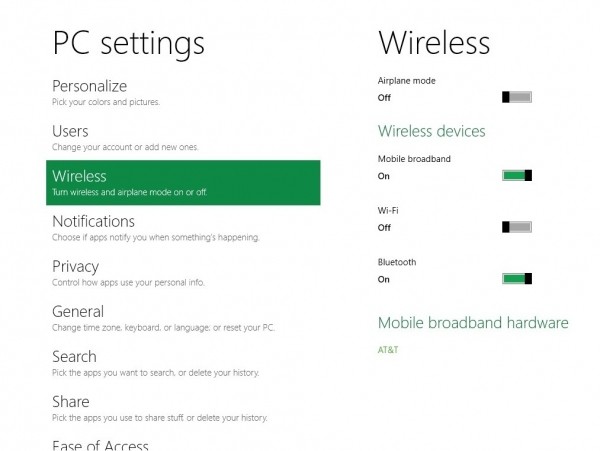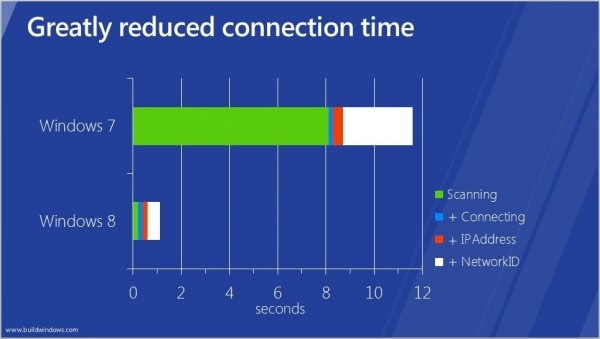Windows 8 will make it easier for users to manage Wi-Fi and mobile connections. Group program manager on Microsoft's devices and networking team Billy Anders has published a post on the company's Building Windows 8 blog that outlines steps taken to improve the wireless connectivity experience.
In Windows 8, mobile broadband is being integrated alongside traditional Wi-Fi for a full wireless experience. This was included in Windows 7 as well but there were several hurdles that had to be overcome before connecting through a mobile device such as third-party drivers and software. To eliminate this roadblock, Microsoft worked with mobile broadband hardware partners to develop a universal driver that will work with all mobile devices and eliminate the need for additional drivers or software.


Microsoft has also developed a new networks settings menu that allows you to turn off individual radios (Bluetooth, mobile broadband, Wi-Fi) or disable them all at once with the new airplane mode. This native radio management is said to eliminate conflicts and confusion that is often introduced when third-party manufacturers add their own connection software.
Much like today's smartphones, Microsoft's connection manager will attempt to give priority to trusted Wi-Fi devices when you are within range, only defaulting to mobile broadband should you not have Wi-Fi available. When connected to a Wi-Fi network, the application will disconnect you from your mobile broadband connection and even attempt to power down the device, thus saving battery life.
To avoid "bill shock" - that is, receiving an outrageously high bill from your mobile provider for excessive data consumption, Windows will delay Windows Updates until you have connected through a non-metered outlet like Wi-Fi. The system will also attempt to connect you to popular Wi-Fi hotspots using WISPr, EAP-SIM / AKA / AKA Prime and EAP-TTLS authentication types. The new connection manager can even display estimated data usage and suggest ways to reduce mobile data consumption.